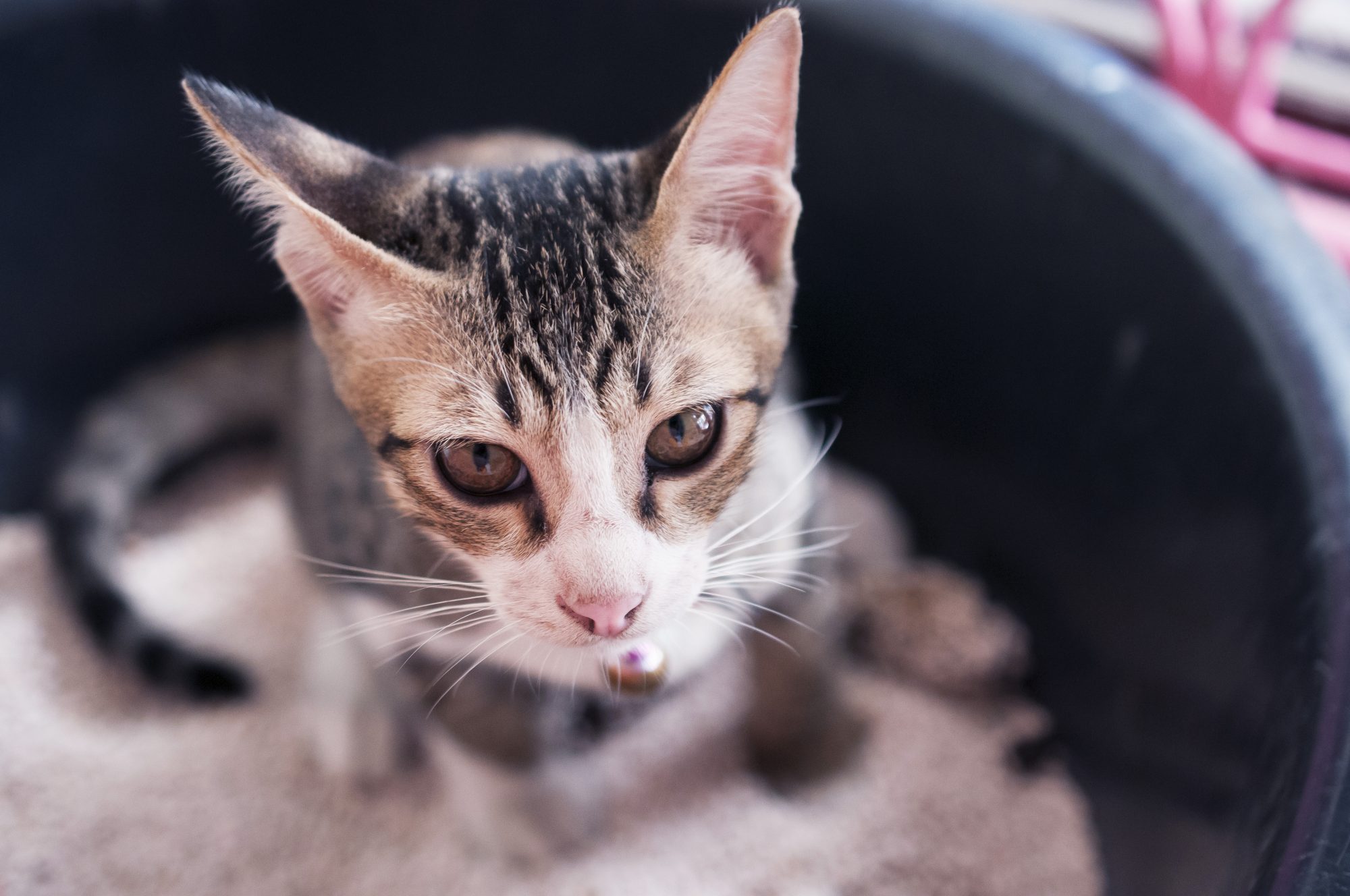Recently one of our clients came to us at her wits end. For years her beloved elderly cat had been urinating all over her house inappropriately. She had tried everything, and had come to the conclusion that her cat was unhappy and the best option was euthanasia. One of our vets had a consultation with her and together they decided the owner would try a couple of suggestions to see if they would help. One suggestion was to get another litter box for the cat, place it in another location of the house but fill it with clumping clay litter instead of her usual brand. A couple weeks later the client called us ecstatic. Since the addition of the second litter box, her cat had not had one accident!
Is there anything more frustrating than a cat that won’t use his litter box? A cat who urinates in inappropriate places or leaves little “presents” under the bed or in a potted plant might actually be trying to tell you something.
By nature, cats want to cover their urine/feces, so a cat who isn’t using its litter box is not exhibiting normal behavior.
More often than not, the problem lies within the litter box itself. Cats are very sensitive to change, even the smallest adjustments can make for a cranky kitty. We’ve put together a list of some of the possible reasons your cat might be protesting against their litter box.
- Dirty Litter: This may seem like too obvious of a fix for the problem, but keeping your cats litter box clean to THEIR standards is very important. Too long between cleanings might cause your cat to relieve themselves outside of the box. Be sure to change the litter frequently and increase scooping.
- Changing the Litter type: There are hundreds of different types of litter on the market today. If you’ve recently decided to change the type of litter you use, it could be the case that your kitty doesn’t like it. Changing litter type should be done gradually, over the course of a couple weeks. Try to stick to types of litter that feel natural to the cat and stay away from anything that’s strongly scented. For more information about kitty litter types click HERE.
- Cover or not to cover: If your cat is used to having an uncovered litter box and then suddenly one day a cover appears, they may decide to go elsewhere, and vice versa. It’s typically recommended to use an uncovered litter box.
- Size: Size does matter, at least when it comes to litter boxes. If your cat feels too cramped or the box seems too big the cat might feel uncomfortable. Your kitty should be able to stand up straight, step in easily, and turn around.
- Multiple cats, one litter box: Most cats would rather not share a litter box. The usual rule of thumb is one cat per litter box and have litter boxes in different rooms to optimize privacy.
- Location: Believe it or not, where you place your cats litter box is important to your cat. Avoid keeping the litter box in a high traffic area, private and quiet locations are best.
- Fill it up: The amount of litter you use to fill the box is of course, important. Your cat should be able to fully cover their waste, 2-3 inches is usually sufficient.
- Moving the litter box: Cats are creatures of habit; moving the location of their litter box can upset their routine, If it is necessary to move the litter box try to do so gradually (as with any other changes), slowly moving the litter box to its new location over a few days.
If after trying all of these suggestions your cat is still urinating or defecating inappropriately, there might be another issue at hand and we would recommend a visit to your vet.
Cleaning the soiled areas in your house where your cat has had “accidents” is also important to prevent future incidences. We recommend using an enzyme based cleaner.

